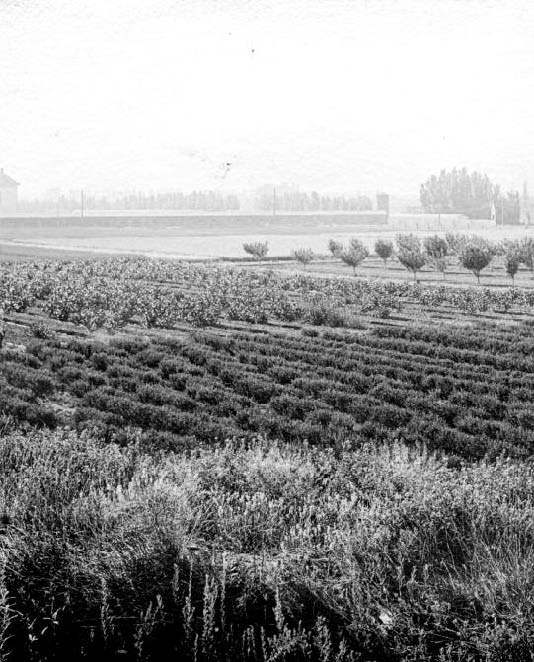edible traditions
PROSCIUTTO DI RENO
An Italian DIY tradition, brought home to the American West.
WRITTEN BY ALICIA BARBER
PHOTO COURTESY OF THE NEVADA HISTORICAL SOCIETY
These days, prosciutto is as easy to come by as a package of hot dogs. Whether imported from Italy or produced by artisans in the United States, the salty, cured Italian ham can be found prepackaged in most supermarkets or, better yet, sliced freshly at a specialty deli.
Sixty years ago, however, the only way for locals to put a little prosciutto on the table was to make it themselves — or buy directly from someone who did. For area families such as the Pincolinis, Damontes, Capurros, and Avansinos, handcrafting prosciutto, sausage, headcheese, and other specialty meats was a time-honored tradition connecting them to the old country and to each other.
Immigration to the Reno-Tahoe region from Italy peaked between 1880 and 1920, with many Italian families settling on ranches and farms throughout the Truckee Meadows. In an age before widespread refrigeration, the Italian cellar was both preparation area and storage space, a visual feast of hanging sausages, salamis, and other cured meats; wooden tables piled high with handcrafted ricotta and other cheeses; and barrels and bottles of homemade red wine.
In the growing chill of autumn, Italian families gathered together to slaughter a hog or purchase one from a neighboring ranch, then worked as a team to use as much of the animal as possible — “everything but the squeal,” recalls Reno resident Robert Quilici, who grew up on a ranch off Longley Lane in south Reno.
Besides the obvious pork chops and roast, popular preparations included pigs’ feet, headcheese, and various types of salumi, Italian pork cold cuts. Blood sausage was a local favorite, made by mixing boiled blood with ground liver and other organs, raisins, and pine nuts, stuffing the mixture into washed intestines, and boiling the links until cooked.
Blood sausage was a treat, but prosciutto was a staple, dry cured to be savored year round. The word itself is derived from the Italian prosciugare, meaning to dry up or to drain. Beginning with the hindquarters of the pig, the first stage involved trimming the meat and pressing out the liquid. Lena Porta Green, who left Parma, Italy, for Loyalton, Calif., in 1929, remembers weighing down the leg with a heavy stone. The meat was then covered with salt and left on a basement table for a month or more, then rubbed repeatedly with more salt, ground pepper, and olive oil. At her family’s ranch on Glendale Avenue near the Reno/Sparks border, Delia Rossi recalls watching her father, Natale Dave Rossi, turn the leg over in the salt again and again to keep it from spoiling.
Once dried, the meat was hung in a cool cellar or basement to complete the curing process. On John Prosoli’s ranch, once located south of Zolezzi Lane near the current site of the Wolf Run clubhouse in Reno, the cellar was tunneled into a bank of earth. There, Prosoli suspended salami and prosciutto from wires under shelves to keep the mice away. After a month or more, they were finally ready to be sliced paper thin and enjoyed for months to come.
The tradition was carried along for a time, becoming less and less common as area ranches gave way to subdivisions, and the older generations passed on. Still, the memories run strong for those who remember the sense of community and heritage bursting from every bite of salty, savory, locally made prosciutto.
More information on regional Italian food traditions can be found in the oral history compilation, The Italian-American Experience in Northwestern Nevada and a companion cookbook, Famiglia e Cucina. Full texts of both are available at http://www.Unr.edu/oralhistory


